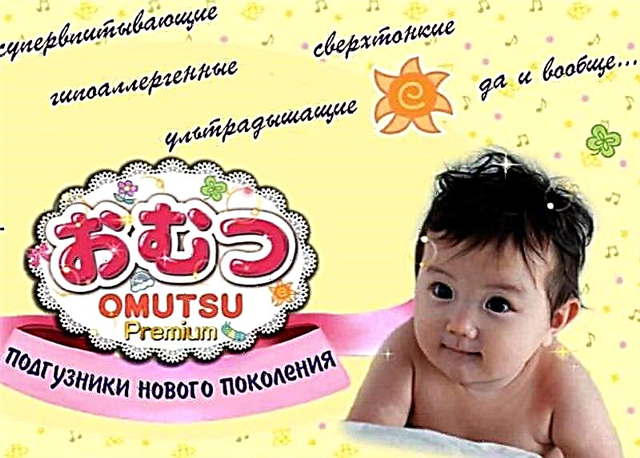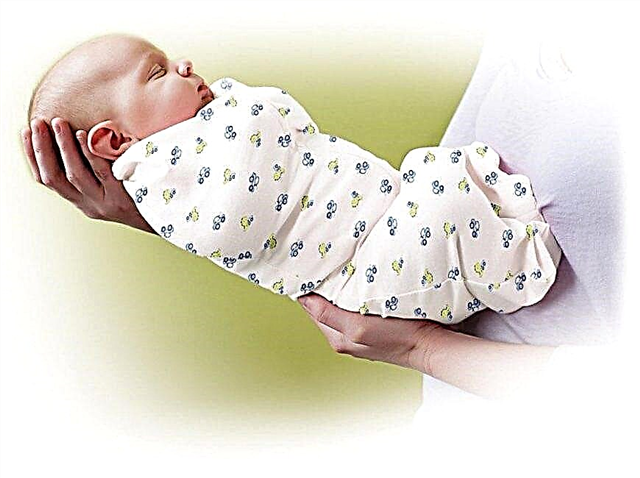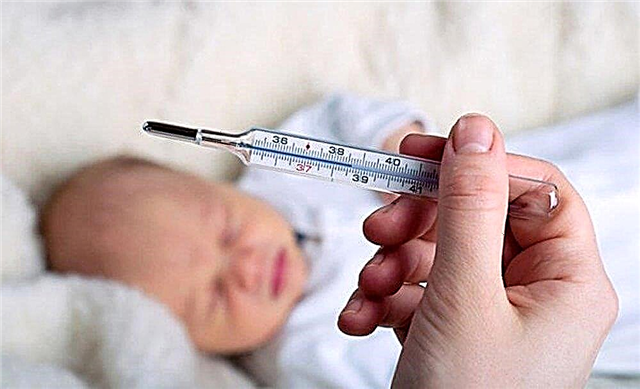
In the first year, the baby develops rapidly, delighting parents with new skills every month. A three-month-old baby changes externally and emotionally. Let's find out exactly what new skills the baby acquires at this age and how parents can help the baby develop.

Physiological changes
- The subcutaneous fat tissue of the child develops, therefore, by the age of three months, the crumbs have chubby cheeks, as well as folds on the arms-legs.
- The muscular system of the toddler develops from top to bottom. The crumb has already mastered the hold of the head and began to control his hands. The hypertonicity of the handles has already completely passed, which allows the baby to more actively explore his body and toys, touching everything with his hands.
- Many reflexes in newborns are already fading away. For example, the search reflex (turning the head when stroking in the corner of the mouth), the proboscis reflex (stretching the lips when touching them), as well as the Babkin reflex (opening the mouth when pressing on the palm) in a three-month-old child should not be. The same reflexes as crawling, sucking or Moro are still very pronounced at 3 months.
- The baby's digestive system is developing. The stomach increases its capacity and can already contain more milk, but the child is not yet ready to perceive other food besides breast milk or an adapted formula. The only supplement in the children's diet may be additional vitamin D, which is often prescribed for 3-month-old children as a preventive measure against rickets.
- The stool of a three month old baby is more uniform and regular. For a toddler receiving only breast milk, the frequency of stool is from 1 time in 2-5 days to 5 times a day. If a child exclusively breastfed has not had a chair for several days, while the child is behaving normally, and the stool after such a long pause is soft, no additional stimulation is required for the child's bowel movement.
For information on how you can play with a three-month-old baby, see the next video with an expert on intellectual development, O. N. Teplyakova.
Physical development
On average, in the third month of life, the baby increases its weight by 750-800 grams, and its height becomes 2.5 centimeters more than it was at 2 months. The increase in head circumference occurs by about 1 cm, and chest circumference by 1-1.5 cm (by the age of four months, these two parameters become the same).
Height, body weight and other indicators of a child's physical development are determined by many factors - heredity, the presence of diseases, the type of feeding and others.

Doctors have determined the average indicators, as well as the boundaries of the norm, by which parents can determine whether their three-month-old child is developing normally. They are presented in the table:
You can use the calculator to work out the norms specifically for your child. The calculator is based on the standards for height and weight from the World Health Organization (WHO).
What can the kid do?
- Lying on its stomach and staying upright, the baby has already learned to hold its head. If you support the baby in an upright position under the armpits and put it on a solid surface, the baby will lean on its legs. In addition, lying on its back, the baby has already learned to turn on the side.
- The eyesight of the baby is actively developing. The kid looks at objects around for a long time, paying attention to both stationary and fast-moving objects. To better see everything in a position lying on the tummy, the baby rises on the forearms.
- The sounds made by a three month old baby have become more diverse. Consonants are added to vowels. Being in a good mood, the kid walks for a long time.
- The baby at 3 months is very emotional. The kid is very happy about the appearance of his mother and communication with her. The complex of revitalization also arises when an adult is singing, the sounds of musical instruments and the form of toys. If the baby is dissatisfied with something, you will hear a loud cry. Negative emotions arise in a 3-month-old baby when communication with mom stops, the toy suddenly disappears, the ambient temperature changes sharply, movement restriction or pain appears.
- By the age of three months, the baby begins to more actively master the world to taste, sucking on whatever he can take with his pens. First of all, the infant sucks on its fists or fingers.

Development activities
Now the baby is awake longer than in the first two months of life, and the time when the baby is ready to perceive new information and communicate should be used thoughtfully.
- In the morning, do a little exercise with your baby. Bend and unbend the legs and arms gently to improve the condition of the ligaments. You can also practice with a baby on a fitball - placing the baby on the ball on the tummy or on the back, hold the baby by the legs and roll carefully.
- Perform a full body massage of the baby regularly, as it will stimulate the muscles of the baby and other organs, as well as improve the well-being of the baby. Start by stroking the back and neck, and finish off by gently kneading your knees and elbows.
- To the daily gymnastics that the mother performs with the baby, at the age of 3 months it is worth adding exercises that will prepare the baby for coups. Turn the right leg of the baby lying on his back to the left so that it becomes thrown over the body. It is this movement that is given to babies the most difficult and it is it that gives the impetus for a coup.
- To stimulate the ability to raise the head and shoulders in a prone position (when the baby rests on his forearms), lay the baby on his stomach more often while laying out bright toys around the baby. For this purpose, special developmental rugs are also often used.
- Put rattles in the baby's handles so that the baby learns to hold the toys on his own and learns them. Also, hang soft toys over the crib so that the baby can reach them with his hands. It will be great if there are bells inside such toys and, after hitting them, the little one will hear ringing sounds.
- Sing songs to the baby, and also talk to the baby more often. At the same time, it is worth making small pauses in the conversation, giving the little one the opportunity to "answer" you with his humming. Call the baby by name more often, and also accompany any of your actions with explanations.
- Show your child his reflection in the mirror. It is also worth introducing the baby to images of animals and various objects.
- To stimulate tactile sensitivity, let your baby touch objects with different textures, for example, a ball twisted from threads, a pot holder, a teddy bear, a soft cube with a bell inside.
- Play different styles of music for your child. When the baby is awake, turn on something rhythmic and fun, and before bedtime you should listen to some calm melodies with the baby. When listening to rhythmic music with a crumb, clap your hands to the beat.
- If you have a pet, supervise it with your baby. Also show the little animals while walking.
- While swimming, throw some brightly colored balls or rubber toys into the water. Let the baby try to catch them in the water.
Nursery rhymes will make the massage more fun.
Watch the next exercise by Tatyana Lazareva, you can do it at any free time.
Care
Start the baby's morning with hygiene procedures, wiping the baby's face and eyes, and if necessary, the nose and ears. After a bowel movement and a few urinations, wash your baby under running water. If everything is in order with the skin of the crumbs, you should not abuse the use of baby cosmetics.
The nails of the crumbs need to be checked daily, and it is best to cut them off after bathing, when the nail plates are softer. If the infant protests against this procedure, you can trim the sleeping child's nails. Use special scissors for babies for this purpose and be sure to check your nails after cutting (slide your finger over them) to make sure there are no sharp edges.
To harden the crumbs, use air baths (their duration is up to 10 minutes), walks, during which the baby will sleep in the fresh air, washing, rubbing. Bathe your baby daily, preferably before bedtime, but you can also at another time convenient for you. For example, if bathing excites the baby, it should be postponed to an earlier time.

Daily regime
By the age of three months, most children have their own daily routine. Babies stay awake and asleep at about the same time every day, which allows mom to plan her affairs. As before, most of the child's day is reserved for sleeping and feeding. A child of three months sleeps about 17 hours a day. About 10 hours are spent sleeping at night, and the rest of the time is divided into three to four naps during the day. Usually one or two naps last longer (1-2 hours), and the rest are shorter (up to 40 minutes).
Walking with a 3-month-old baby is recommended twice a day. The most appropriate time to go for a walk is considered morning (10-11 hours) and the time in the afternoon (16-17 hours). The duration of the walks is determined by the outside temperature and other weather conditions. In summer, with a 3-month-old baby, you can spend up to 6 hours outside. It is worth not going for a walk only in case of severe frost, gusty winds or downpours.
Feeding babies receiving only mother's milk, as before, is carried out on demand. Most babies ask for their mother's breast before and after bedtime. The average number of breastfeeds at this age is 10-12 during the day and 2-4 at night. In this case, the baby is often torn off from the mother's breast during the feeding process. The average break between long feedings is 2.5 to 3.5 hours.
If the baby is fed formula, he will have a stricter feeding schedule with six meals at intervals of 3.5 hours. To determine the daily volume of the mixture for the child, its weight should be divided by 6. Further, this figure is divided by the number of feedings per day. On average, an infant of 3 months eats 800-900 ml of the mixture per day and up to 180 ml in one feeding. It is still too early to introduce complementary foods at this age even for artificial children.
Diversify your day with the following exercise from Tatiana Lazareva.
Typical day
It becomes more and more interesting to communicate with a three-month-old baby, and many mothers' morning begins with a charming smile from a baby. Your day with a 3 month old baby might look like this:
It should be noted that the temperament of different children is different, therefore all recommendations regarding the regime are only approximate. Parents, first of all, should take into account the peculiarities of their child and adjust the schemes proposed by the pediatrician to the needs of the baby, that is, follow a regime that will be adapted to the biorhythms of a particular child.

Frequent problems
- Insufficient weight gain. Normally, a breastfed baby adds 500-2000 grams per month. If the figure of the increase is less, the question arises about supplementing with an adapted mixture. Many mothers suspect a low amount of milk due to the more restless behavior of the baby at the breast and a decrease in the feelings of milk flow, but these signs do not at all indicate hypogalactia. Babies of 3 months are really more often distracted during feeding due to their desire to constantly explore the world around them, and the feeling of milk rush may disappear due to the fact that lactation has already been established and milk comes during feeding in the amount necessary for the baby. Objective reasons for feeding a child are small weight gain in 2 weeks and a reduced number of urinations per day.
- Restless daytime sleep. The nervous system of many three-month-old babies is still not stable enough and gets tired rather quickly. This leads to poor sleep, which lasts 20-30 minutes or less during the daytime. The correct organization of the daily routine - sleep and wakefulness - helps to improve the functioning of the baby's nervous system. Parents should make sure that the baby is not awake for more than 1.5-2 hours, but has the opportunity to sleep.
- Adverse reactions to vaccinations. At 3 months of age, the child is given the first DPT vaccine, which often has side effects on the child's body. In every fourth baby, on the first day after the administration of this vaccine, the temperature rises and local changes are observed (redness, swelling, soreness, induration). 10% of babies may have side effects such as decreased appetite, diarrhea, drowsiness, vomiting, and others. At elevated temperatures, the child is given an antipyretic drug, and changes at the injection site of the vaccine do not require any treatment. If the child's condition has worsened greatly, the local reaction is very pronounced or other alarming symptoms have appeared, the baby should be immediately shown to the doctor.
What you need to pay attention to at 3 months, look in the video of Larisa Sviridova. If you notice these problems in a child, inform the doctor.



